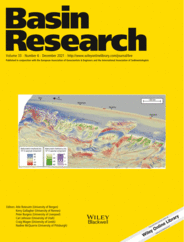
Full text loading...
 , Daniel Bosence1
, Daniel Bosence1 , Peter Burgess2
, Peter Burgess2
Lacustrine carbonate facies distribution is controlled by multiple environmental parameters including climate, hydrology, and tectonic setting, but few published models address this complexity. In this study, seismic and borehole data, integrated with outcrop logging, correlations, and facies models, are used to create a new tectono‐sedimentary model demonstrating how extensional faults, linked by a relay ramp, control distribution of lacustrine carbonate facies in the Upper Jurassic to Lower Cretaceous Purbeck Limestone Group (Wessex Basin, UK). Accumulation occurred in half‐graben sub‐basins south of two extensional east‐west faults, with widespread subaerial emergence of footwall blocks to the north. The lacustrine limestones of the lowest unit of this Group are characterised by in‐situ microbial mounds within bedded inter‐mound packstones‐grainstones. Mounds occur in three depositional intervals separated by paleosols. The distribution of facies indicates more brackish‐water conditions shoreward to the west, and more hypersaline conditions basinward to the east. The relay ramp hosts extensive microbial carbonate buildups formed in response to carbonate‐rich waters sourced from the northern limestone footwall blocks that fed into extensive shallow‐water areas on the low‐angle relay ramp slope.
,Depositional model of the Cap Beds of the Purbeck Limestone Group or Dorset showing the facies distribution in the Purbeck lake (modified after Underhill, 2002).

Article metrics loading...

Full text loading...
References


Data & Media loading...

